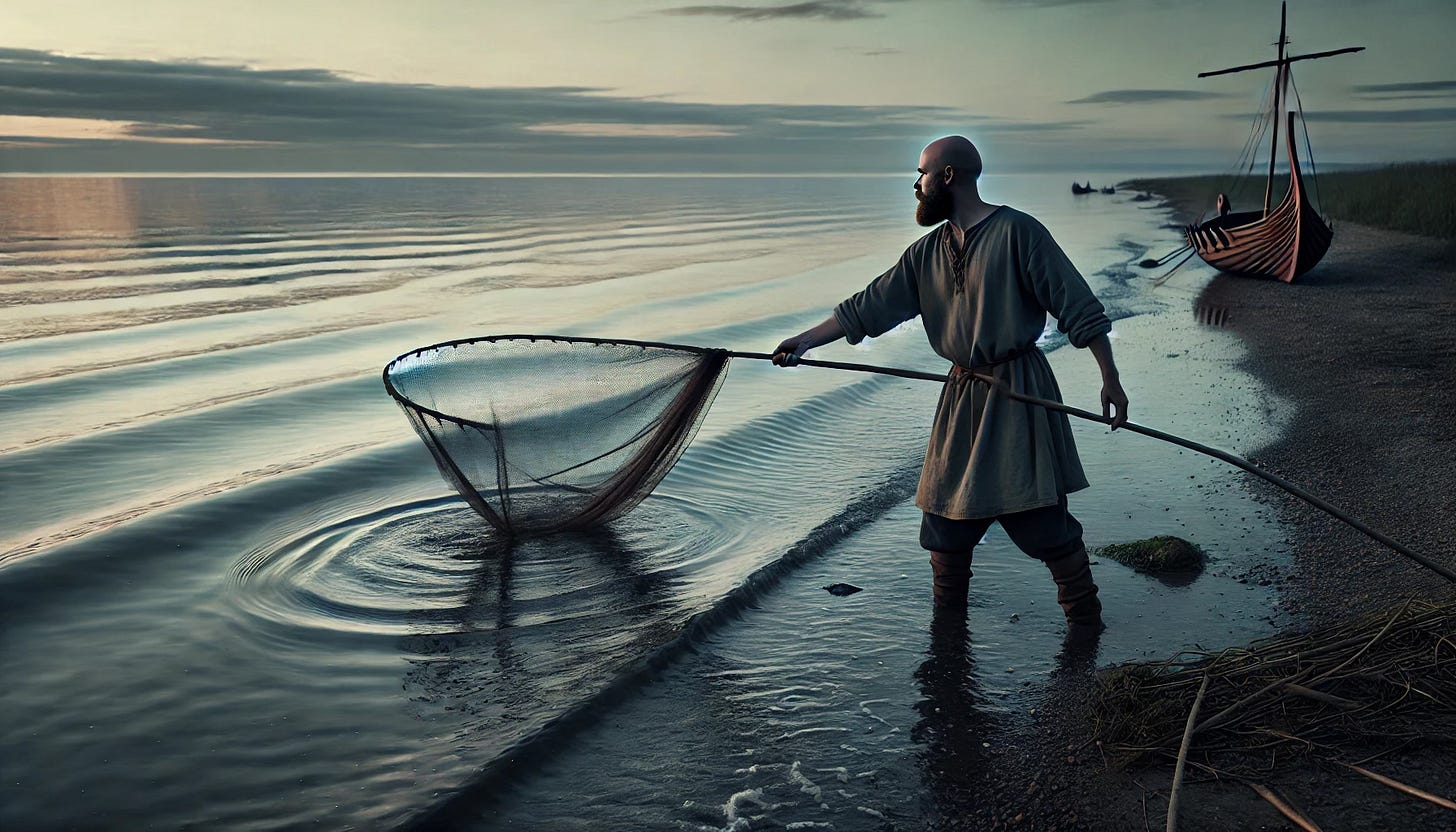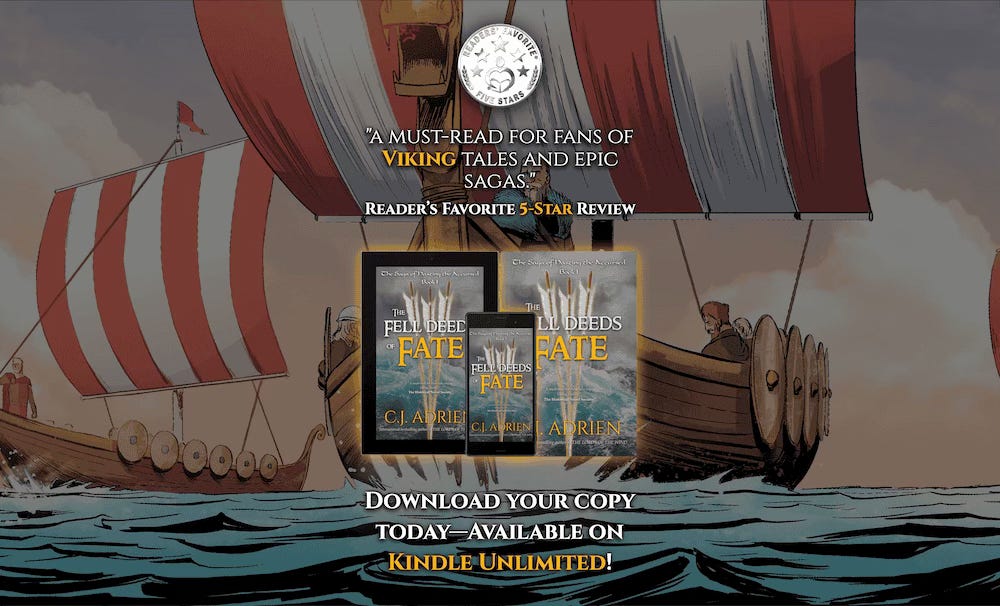Hook, Loom, and Plough: The Viking Life They Don’t Show in TV Series and Films
Exploring the Quiet Crafts and Everyday Lives of Vikings Beyond the Stereotypes.
While perusing recent archaeological findings, an article titled "Viking Settlers in Orkney 'Preferred Fishing to Fighting'" caught my attention. The piece challenged the stereotypical image of the Vikings as relentless raiders and warriors, presenting instead a portrait of a society rooted in craftsmanship, trade, and sustenance. This unexpected glimpse into the everyday lives of Viking settlers in Orkney prompted me to reflect on the often-overlooked contributions of Viking trades to their society and economy. These silent crafts—from fishing to shipbuilding and textile production—shaped the Viking Age just as much as their more infamous exploits.
The findings in Orkney paint a vivid picture of Viking settlers who adapted to their environment, prioritizing fishing and farming over raiding and conquest. Archaeologists unearthed tools and remnants of a thriving local economy, including evidence of fishing nets, hooks, and bone implements for catching fish in the surrounding waters. Additionally, remains of drying racks and fish processing sites suggest that preserved fish was a significant trade commodity. This focus on subsistence and trade rather than pillaging highlights the pragmatic ingenuity of Viking communities, particularly in regions where resources were abundant and violence unnecessary.
The bold claim that these Vikings "preferred fishing to fighting" is rooted in the absence of substantial evidence of raiding activity in the region during this period. Archaeologists have found little in the way of weapons or defensive structures—artifacts that typically indicate a focus on conflict. Instead, the prevalence of fishing equipment and agricultural tools suggests that their energies were directed toward peaceful pursuits. While it is possible that these Vikings engaged in both raiding and subsistence activities, the archaeological record leans heavily in favor of the latter.
As the Orkney article suggests, fishing was a cornerstone of local trade networks. Coastal and deep-sea fishing provided ample food, while preserved fish could be traded with inland settlements. The Viking settlers’ ability to extract sustenance from the sea demonstrated an advanced understanding of their environment and a deep integration into the natural world. This harmonious relationship with nature was mirrored in other crafts, such as comb-making, textile production, and ship carving, integral to the Orkney settlement’s economy.
Consider the artistry of Viking comb-making. Combs crafted from reindeer antlers were functional tools and intricately designed artifacts that showcased the skill and creativity of their makers. These items, discovered in European archaeological sites, were valuable trade goods. The craftsmanship required to produce them highlights a sophisticated understanding of material properties and design.
Textile production, another vital trade, was primarily driven by women using upright looms. Viking women spun wool and wove cloth, producing garments for practical use and trade. Woolen textiles in Orkney suggest that this labor-intensive craft played a crucial role in the settlers’ lives, serving local needs and broader trade networks. The process required significant skill and patience, from preparing raw wool to creating intricate patterns, underscoring its importance in the community’s economic and cultural fabric.
Ship carving epitomizes the ingenuity and ambition of the Viking Age. The longships that carried Norse explorers across oceans and rivers were feats of engineering and artistry. Carved from oak and adorned with intricate designs, these vessels were practical symbols of power and mobility. In Orkney, evidence of shipbuilding underscores its vital role in facilitating trade, travel, and cultural exchange, connecting the settlement to the broader Viking world.
The cumulative impact of these trades on Viking society cannot be overstated. They were the backbone of a thriving economy that extended from Scandinavia to the far reaches of the known world. Viking artisans’ ability to create functional and beautiful goods ensured their products’ desirability across Europe and beyond. This demand facilitated the establishment of extensive trade networks, connecting Viking settlements to diverse cultures and economies. As goods traveled along these routes, so did ideas, technologies, and cultural practices, enriching both Viking and foreign societies.
Archaeological findings reveal that the peaceful focus of the Orkney settlers offers a compelling counterpoint to the narrative of Vikings as marauding raiders. Instead, it highlights their adaptability and the centrality of trade and craft. This nuanced understanding of Viking society allows us to appreciate the interconnectedness of their world, where raids were but one aspect of a complex and multifaceted culture.
When I research for my books, I often find myself delving into these details—the daily routines, the tools, the processes that formed the fabric of Viking life. Understanding how textiles were spun, fish were preserved, or ships were carved allows me to create a richer, more immersive world for my readers. I try to imagine what it might have felt like to stand in a smoky longhouse, hear the clatter of a loom, or smell the brine from drying fish. These sensory elements anchor the past, making it tangible. But even with all this research, the focus of my novels often pulls me back to the archetypal Viking warrior.
My protagonist, Hasting, is very much the stereotypical fighter. His world is raiding and survival, of strategic cunning and martial prowess. He’s not one to sit and reflect on the intricacies of fishing nets or the beauty of a carved comb. He exploits people like the craftsmen and settlers described in the Orkney article, taking what he needs to sustain his journeys. While this focus aligns with the demands of storytelling, I sometimes wish there were more room to explore the quieter aspects of Viking life. Yet, I recognize that daily life, as crucial as it was, doesn’t always make for exciting narrative arcs. Hasting’s perspective is one of action, not introspection, and through him, I explore a very different side of the Viking Age.
The contrast between the lived realities of Viking settlers and the roving life of a warrior like Hasting underscores the diversity within Viking society. The Orkney findings remind us that history is rarely as one-dimensional as it seems. While my novels may focus on the stormy seas and bloody battles, the silent crafts and the rhythms of daily life truly shaped the Viking world. Though often relegated to the background, these details offer a glimpse into the ordinary lives that sustained the extraordinary feats of the Viking Age.



